When you think of impressive mid-Atlantic gardens, estates such as the du Pont’s Winterthur and Longwood spring to mind. However, there’s a newer garden on the block that is making a name for itself, particularly because of its improbable story.
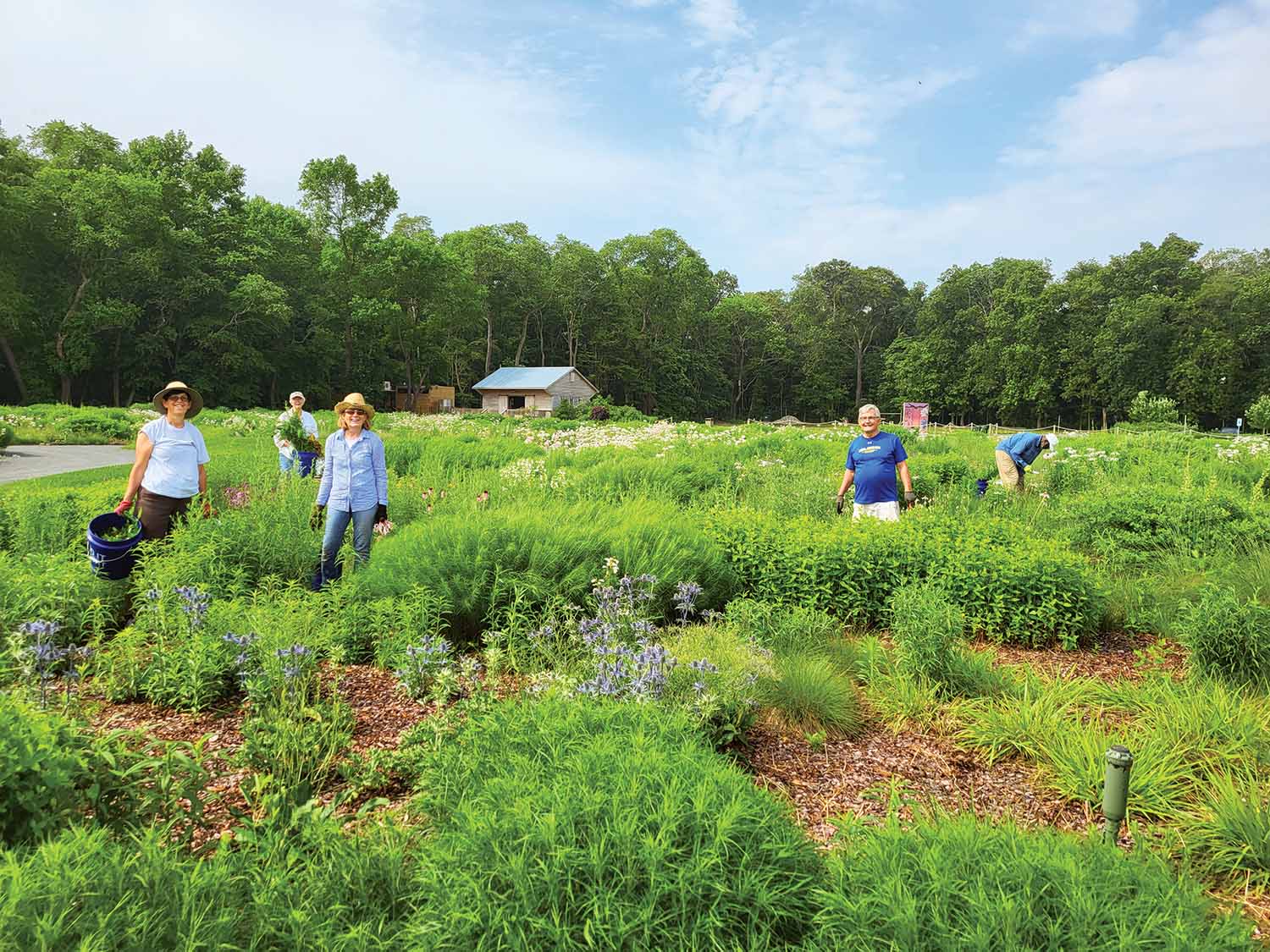
Photo courtesy of Delaware Botanical Gardens
Scores of committed volunteers, including many retirees, generously donate their energy and time to plant, weed, and maintain these expanding gardens.
The Delaware Botanic Gardens at Pepper Creek sprouted without inherited acreage or a wealthy donor. Its locale in a rural area about 30 minutes from Bethany Beach is not far from where many skilled retirees looking for “a give-back project” have settled. A band of these visionary volunteers came up with the idea of creating a lovely, sustainable garden nearby. To jumpstart the project, Executive Director Sheryl Swed and President Ray Sander, who are married, put “a little something in the kitty,” as Sheryl says. The next step was to find some land, so Sheryl, who had served 25 years in the U.S. government, and some of the other volunteers contacted the Sussex County Land Trust with their idea. They toured a 37-acre farm that had woodland so overgrown with greenbrier they couldn’t even access the creek from the property. A supporter advised them “to find those people who can look at a property and squint and see the potential,” says Ray, who has a financial management background. Undeterred, the group formed a nonprofit, and in 2014 the trust leased them the land at $1 for 99 years in a twice-renewable contract.
Needing more funding and a designer, they reached for the stars and contacted Piet Oudolf, the renowned designer of The High Line Garden in New York City and the Lurie Garden in Chicago. Known for his emphasis on perennials and native plants, Oudolf seemed the ideal choice to help create beautiful, educational gardens that also support local ecosystems. The unusual origin story of the land drew Oudolf’s admiration, and he agreed to design 2 acres, now known as the Piet Oudolf Meadow.
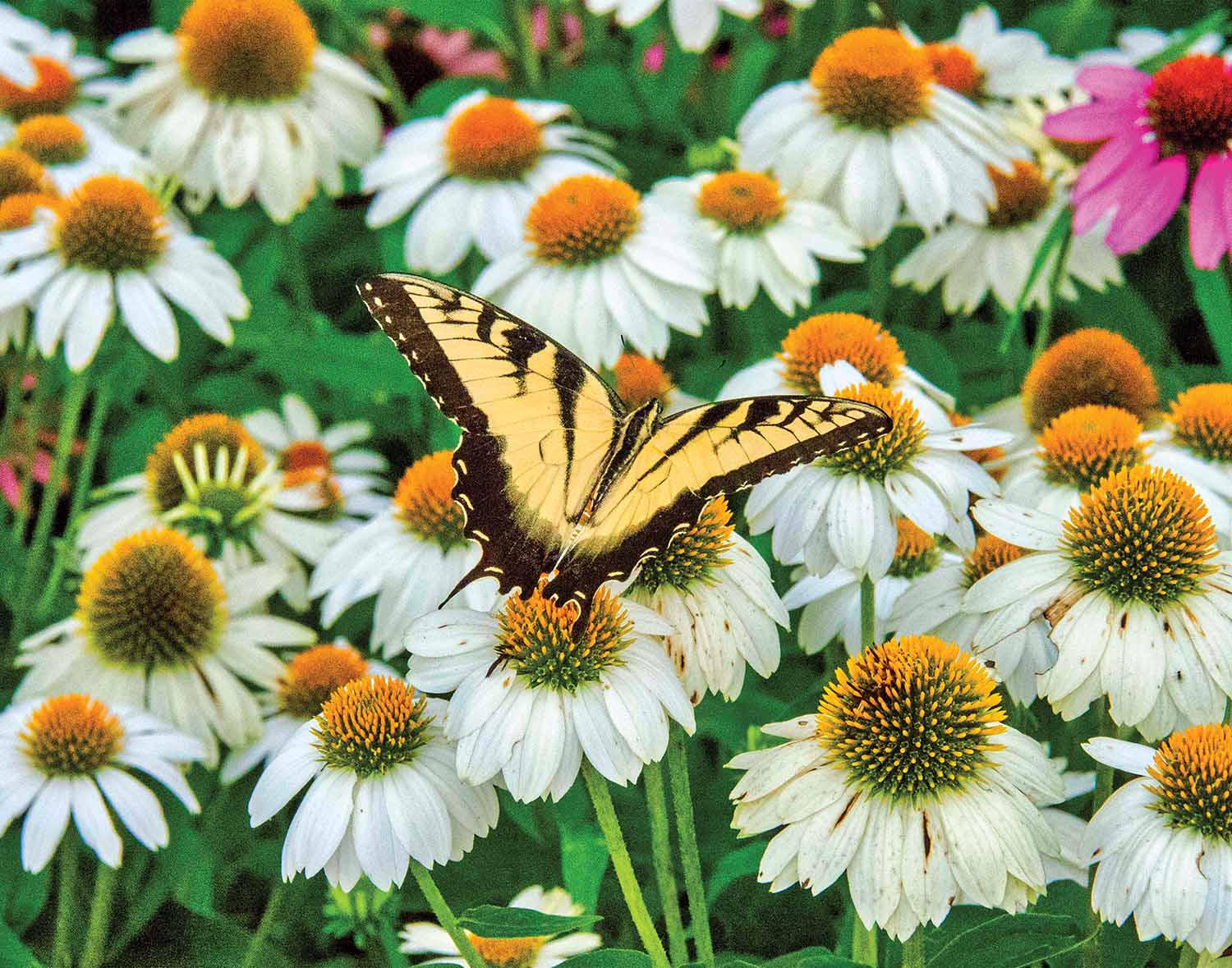
Abundant native perennials, shrubs, and trees—like coneflowers, asters, winterberry, and oaks—create a welcoming habitat and ample food for swallowtail butterflies, as well as bees and a variety of birds.
Then came a $750,000 grant from the Longwood Foundation. That grant combined with Oudolf’s design and the renewable lease were “the three rocket boosters that allowed the project to lift off and achieve orbit,” says Ray. “Other foundations and donors viewed the Longwood Foundation grant as validation of the project’s worthiness and sustainability.” With additional support from local businesses, the gardens grew from a vision on paper to a public garden by 2019. The slew of donations ranged from engineers who tackled zoning changes pro bono to nursery owners who added extra plants to orders.
Sheryl even found the architect for the nature-inspired building that houses restrooms while talking to her Pilates teacher, who happens to be married to one. “We needed to design a public bathroom that matched the beauty of the garden,” says Sheryl. “We didn’t want to have some utilitarian shack.”
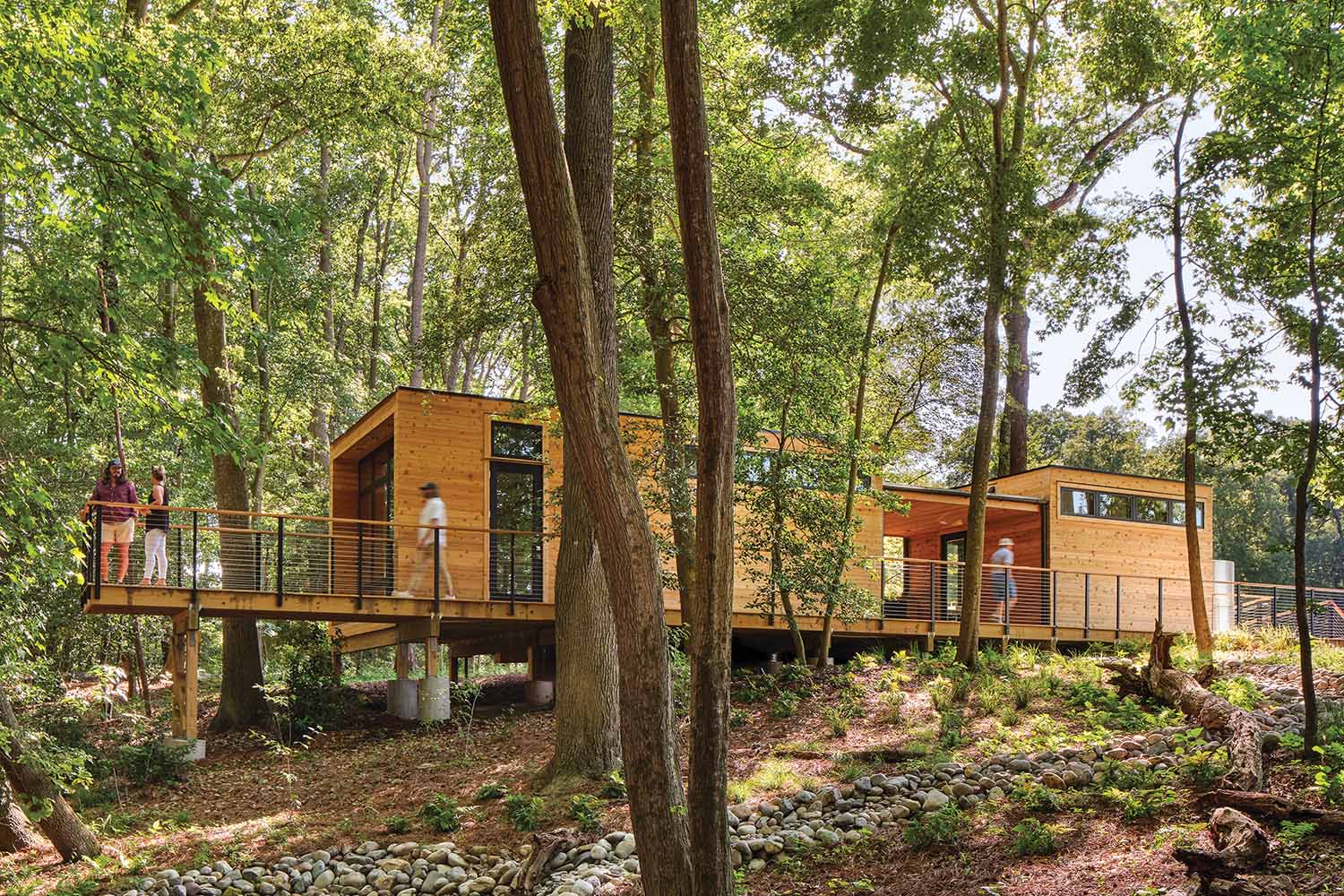
The award-winning, eco-friendly restrooms include rain chains that feed a living wall, as well as several rain gardens to follow stormwater management practices. Photo courtesy of Sea Studio Architects.
Carol McCloud, vice president and former human resources expert, oversees the volunteer program. She says those people who generously give of their time are what set this garden apart. “We come together from different areas and walks of life and backgrounds, but we all have a passion for the gardens.” On her tours, Carol loves to share anecdotes about Oudolf’s visits and his hands-on involvement. When he saw the first iteration of a grassy mound in his design, he “put his hands on his hips and was shaking his head,” she says. “Then he asked for a shovel. He worked with the volunteers the entire day, getting that mound to the circumference and height he wanted.” After grasses had grown over it and they had installed “keep out” signs to maintain its beauty, Oudolf again shook his head. Ignoring the signs, “he ran up on the mound and put his hands up in the air—this big, wonderful man,” Carol continues. “Then he welcomed everybody to come up. He wanted people to have the opportunity to feel the grass and to sit on the grass. And he wanted kids to roll down the hill!”
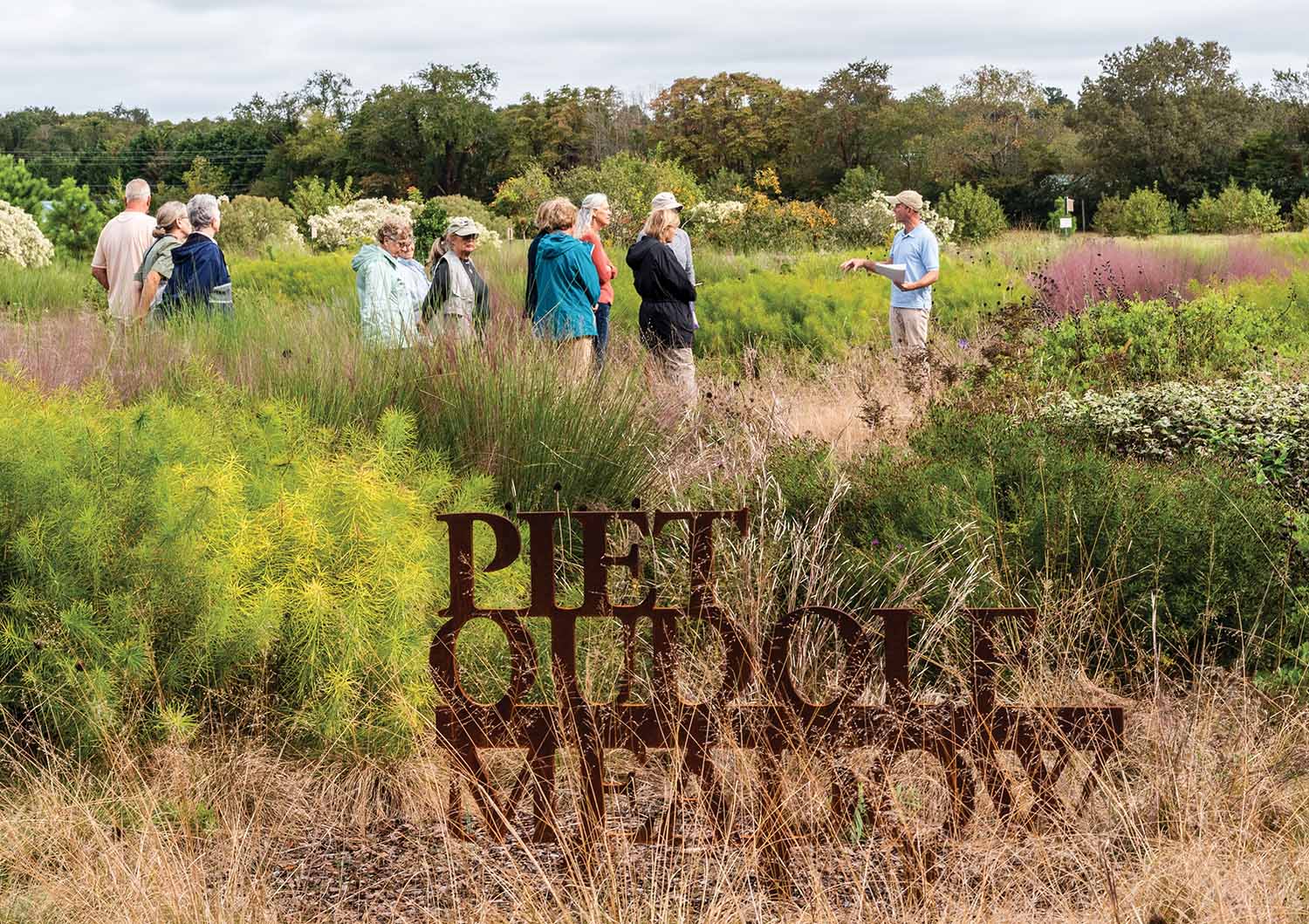
Stephen Pryce Lea, director of horticulture and educational programming at the Delaware Botanic Gardens, leads one of his frequent tours through “Piet’s Meadow,” a highlight of any visit. Photo by Ray Bojarski.
Stephen Pryce Lea, director of horticulture and educational programming at the Delaware Botanic Gardens, leads one of his frequent tours through “Piet’s Meadow,” a highlight of any visit. Photo by Ray Bojarski.
Piet’s Meadow, as it’s commonly called, includes prairie dropseed as a matrix plant, says Stephen Pryce Lea, the garden’s director of horticulture and educational programming. Stephen and his team offer programs that emphasize the wildlife benefits of using native plants, such as a workshop on which perennials will attract and support butterflies. The native plants appear in all of the gardens, including a woodland garden, an education garden, and the Rhyne Garden, which filters the parking-lot runoff. But native species aren’t the only things growing. Over the last two years, 50-plus volunteers have planted more than 185,000 bulbs, including crocuses, daffodils, and species tulips.
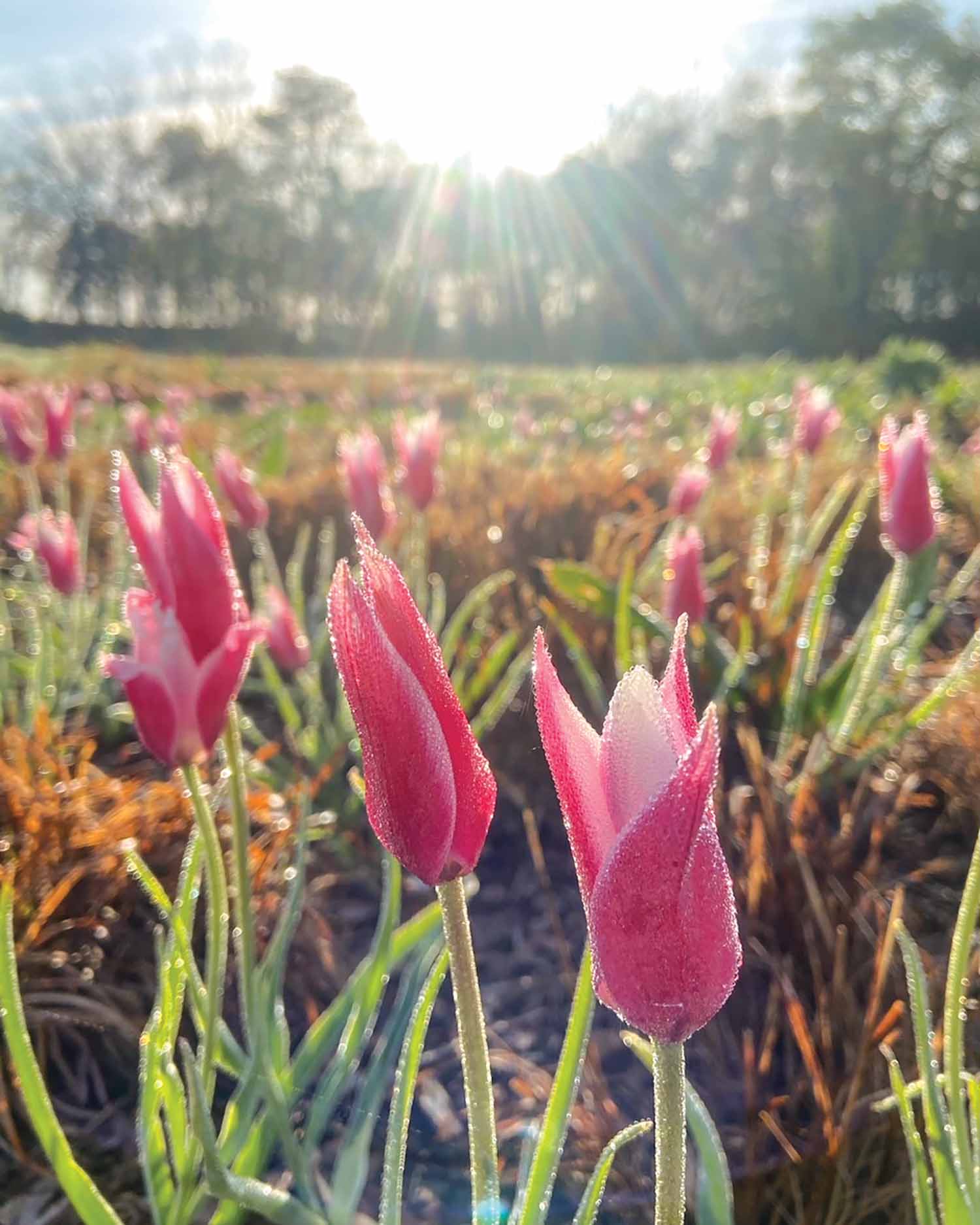
Photo by Stephen Pryce Lea.
Photo by Stephen Pryce Lea.
Chosen with Oudolf’s approval, these early bloomers add bright splashes of color and nectar. Another big undertaking involves more than 100 volunteers who return to the garden early each year to cut back the seedheads and leave them through the winter to support the habitat. While some might view this style of gardening as messy, “that mess is so valuable,” says Stephen. He often shares advice on how to have a wildlife habitat and “still keep it tidy.” As the gardens expand, fundraising has exceeded $8 million. In 2021, the Delaware Botanic Garden stewards earned the Governor’s Outstanding Volunteer Service Award for transforming this now thriving corner of their state. Proof that the improbable is probable.
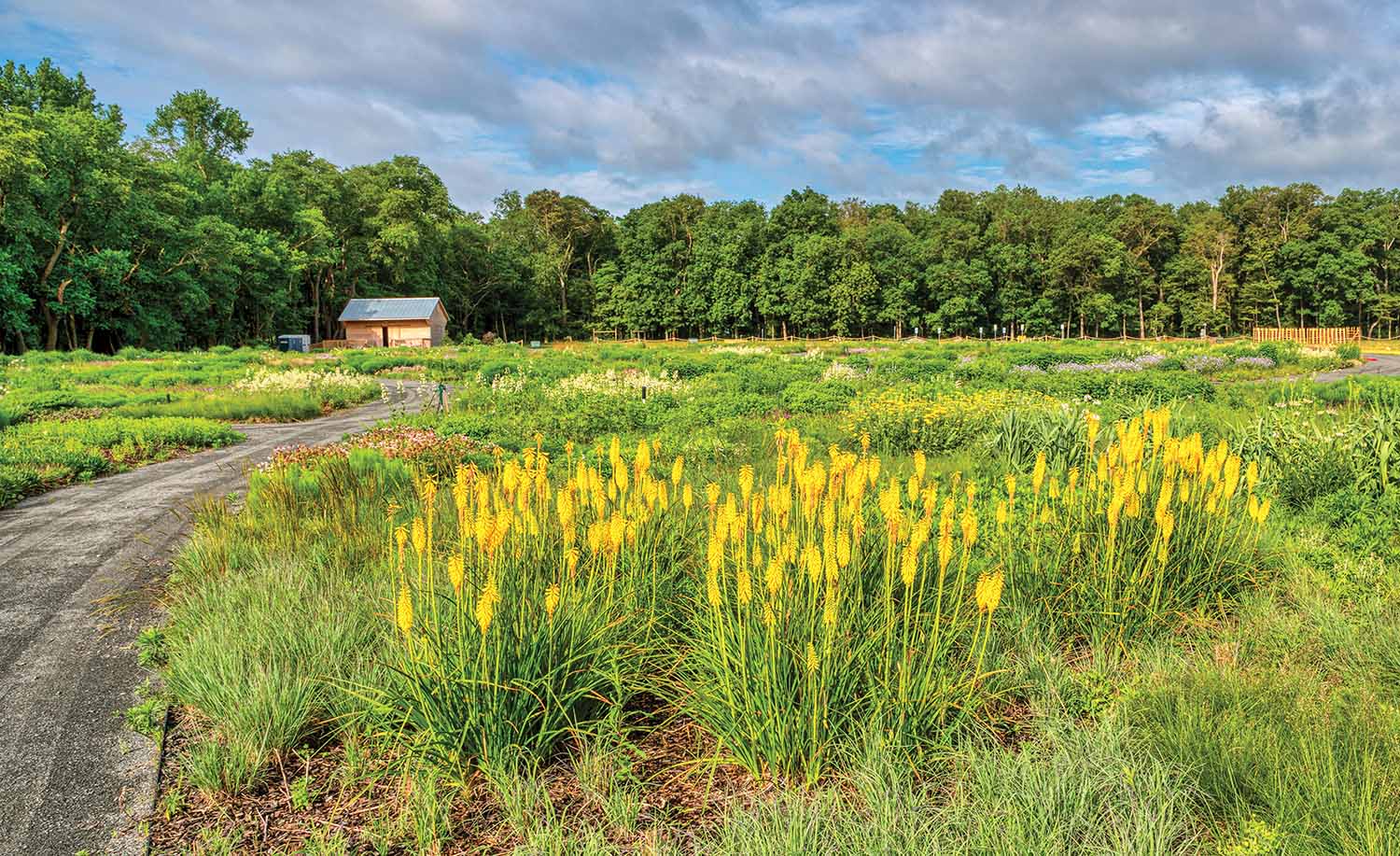
From June - October, stands of perennial Kniphofia ‘Sunningdale Yellow’ and Achillea ‘Coronation Gold’ a long-flowering yarrow, color this field with gold.
By Amy Brecount White | Photography courtesy of Delaware Botanic Gardens



